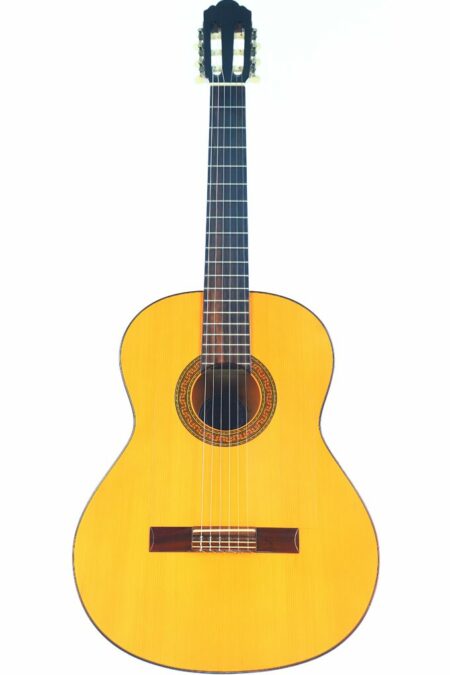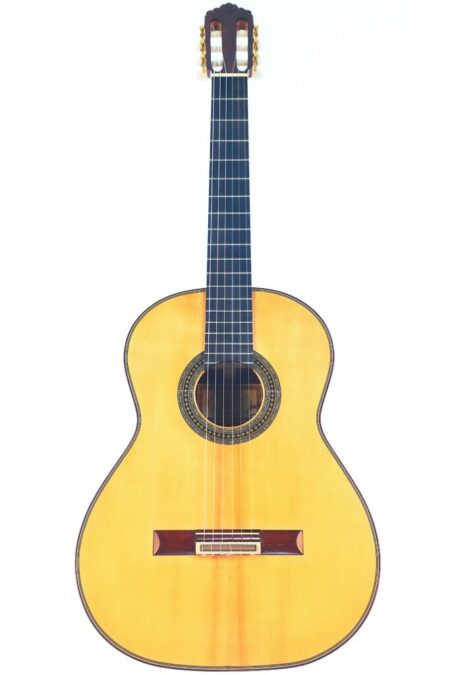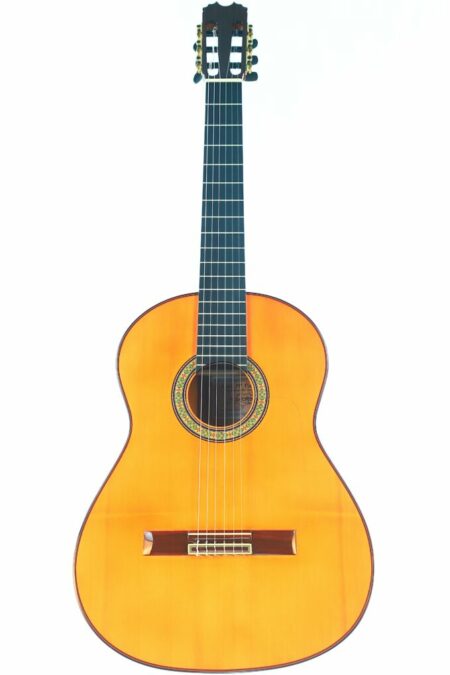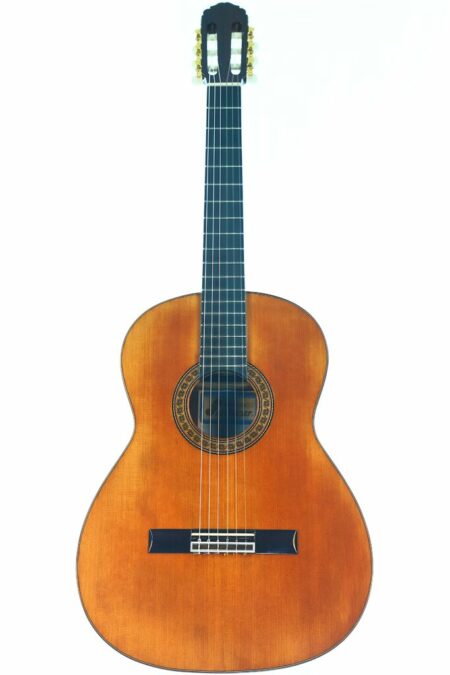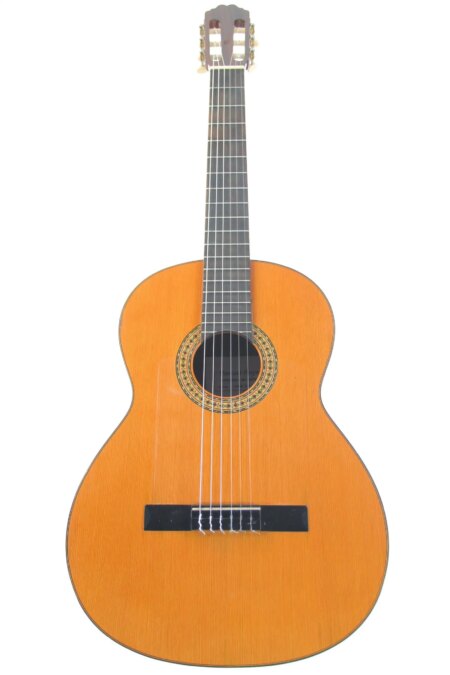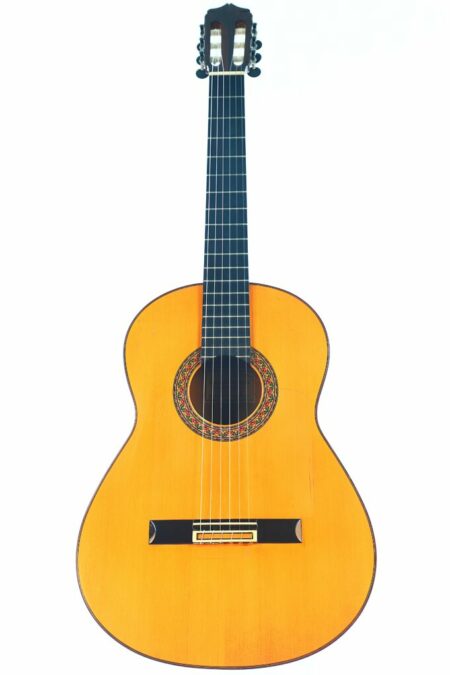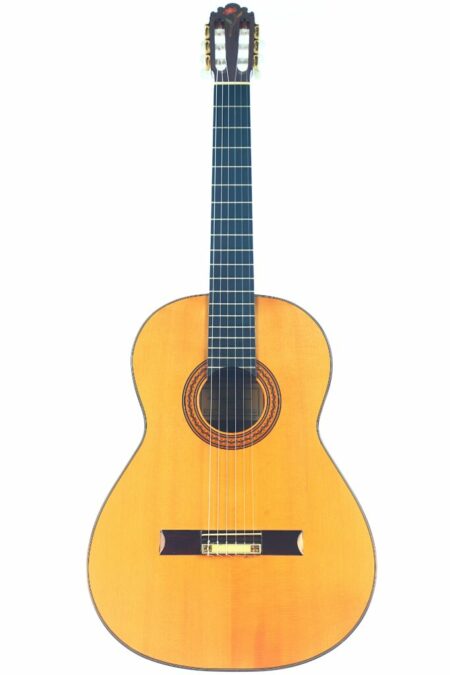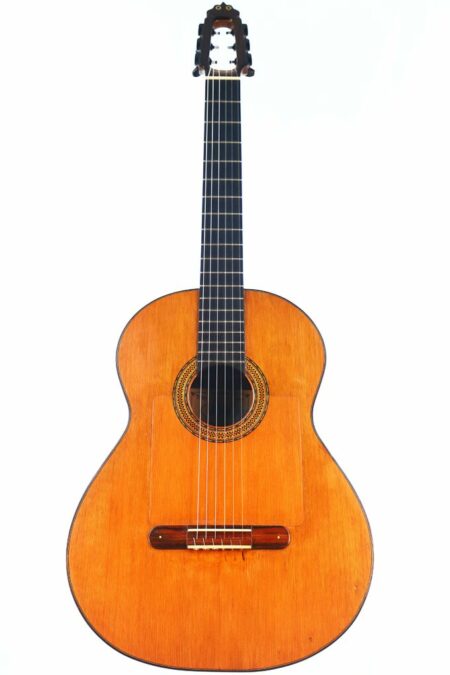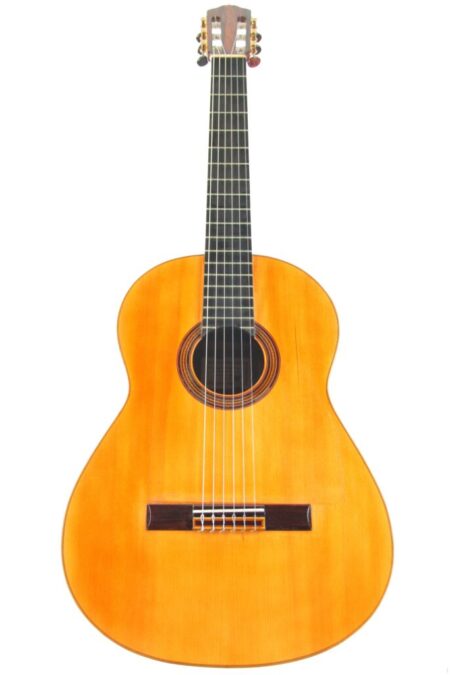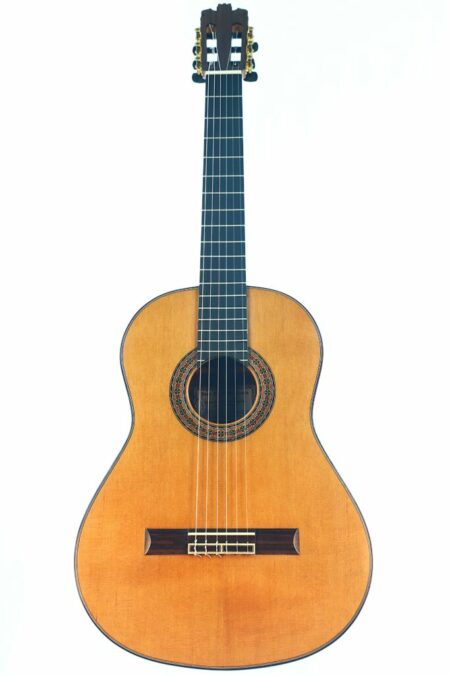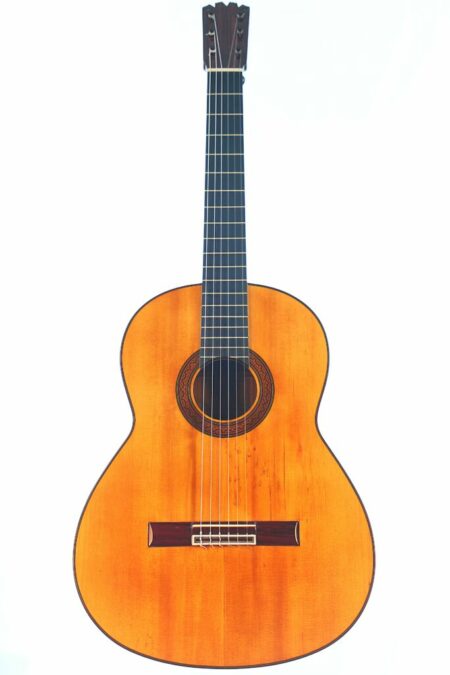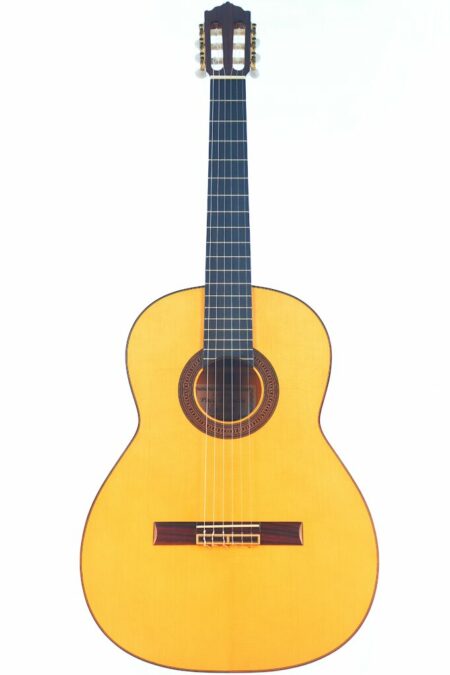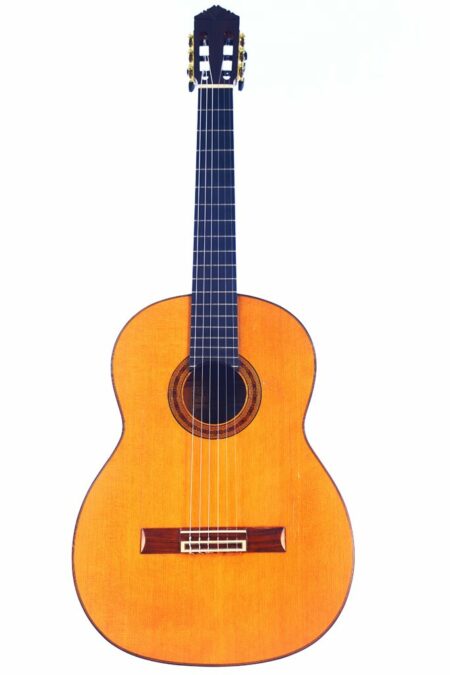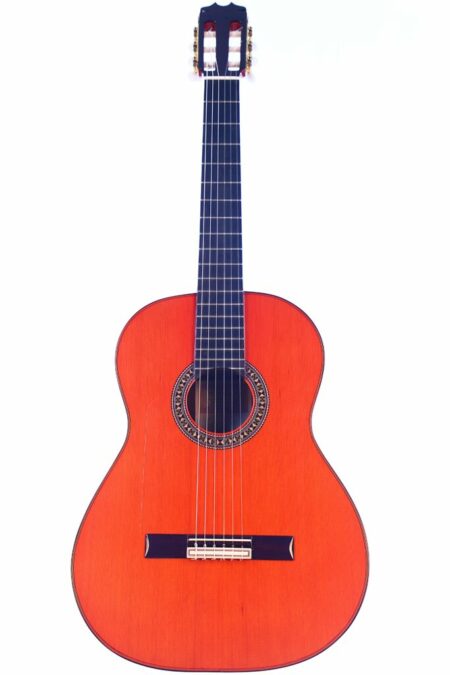Flamenco Guitars
Passionate, Direct & Full of Rhythm – Discover Flamenco Guitars Online
Flamenco guitars represent powerful attacks, fast playing techniques, and the unmistakably percussive sound of Spain. Whether new or used, you will find handpicked models with typical construction from cypress/rosewood combined with spruce/cedar, low action, and fast attack. They are ideal for traditional Flamenco styles such as rasgueado, picado, or golpe. Each Flamenco guitar is an instrument with character – whether crafted by an experienced luthier or as a vintage guitar.
Browse now and discover the perfect Flamenco guitar for your playing style!
-
Jose Ramirez Flamenco Guitar
plus Shipping
-
Manuel Ordono 2023 Flamenco Guitar
plus Shipping
-
José M. Palmero 2024 Flamenco Guitar
plus Shipping
-
Manolo Sanlucar 2001 Flamenco Guitar
plus Shipping
-
Juan Estruch 1972 Flamenco Guitar
plus Shipping
-
Manuel Reyes ~1990 Flamenco Guitar
plus Shipping
-
Lorenzo Alvarez 1982 Flamenco Guitar
plus Shipping
-
Antonio Gonzalez Cardenal 2001 Flamenco Guitar
plus Shipping
-
Miguel Garcia Cabezas 2000 Classical Guitar
plus Shipping
-
Viuda Y Sobrinos de Domingo Esteso 1940’s Flamenco Guitar
plus Shipping
-
Arcángel Fernández 1964 Flamenco Guitar
plus Shipping
-
Juan Fernandez Utrera 2024 “Negra” Flamenco Guitar
plus Shipping
-
Pena Vargas 2015 Flamenco Guitar
plus Shipping
-
Francisco Munoz 2021 “Negra” Flamenco Guitar
plus Shipping
-
Felix Manzanero 1965 Flamenco Guitar
plus Shipping
-
Jose Salinas 2019 Negra Flamenco Guitar
plus Shipping
-
Paco de Lucía Siroco 2003 Flamenco Guitar
plus Shipping
-
Gerundino Fernandez 1988 Flamenco Guitar
plus Shipping
-
Augustin Sanchez 2022 Flamenco Guitar
plus Shipping
-
Hermanos Conde 1998 “Paco de Lucia Special”
plus Shipping
Flamenco Guitars – Authentic Sound & Spanish Passion
What makes a true Flamenco guitar?
 A true Flamenco guitar is characterized by its specific construction and choice of materials, which shape its unique sound and playability. The body is typically lighter, and the top is often made of thin spruce, resulting in a vibrant and direct tone. For the body, cypress wood is commonly used, sometimes also rosewood, which gives the instrument a brilliant timbre while providing the necessary resonance.
A true Flamenco guitar is characterized by its specific construction and choice of materials, which shape its unique sound and playability. The body is typically lighter, and the top is often made of thin spruce, resulting in a vibrant and direct tone. For the body, cypress wood is commonly used, sometimes also rosewood, which gives the instrument a brilliant timbre while providing the necessary resonance.
Typical features of a Flamenco guitar include a low action and a slim neck with a narrow fretboard, allowing players to execute fast, precise strokes and complex finger techniques. These characteristics support the rhythmic and percussive elements of the Flamenco style, often associated with passionate expression and dynamics.
In comparison to a classical concert guitar, the Flamenco guitar is often louder and more percussive, offering space for a different playing technique specifically tailored to the needs of Flamenco. These differences make it an essential instrument for Flamenco musicians and enthusiasts of the genre.
Used or New Flamenco Guitars – What’s Right for You?
When purchasing a Flamenco guitar, buyers often face the choice between used and new instruments. Used Flamenco guitars offer the advantage of a well-played sound and often possess a special character developed through decades of playing. They can tell a unique story and are frequently available at attractive prices.
A new model may be worthwhile if you’re looking for an untouched instrument with the latest materials and technologies. It also allows you to select the instrument according to your individual preferences.
When buying used Flamenco guitars, pay attention to the condition of the wood, the string height at the 12th fret, and any potential cracks or repairs. At Vintage Guitar World, we guarantee 100% playability of your instrument, as all guitars are thoroughly checked by our luthier.
Construction & Sound – These Details Make the Difference
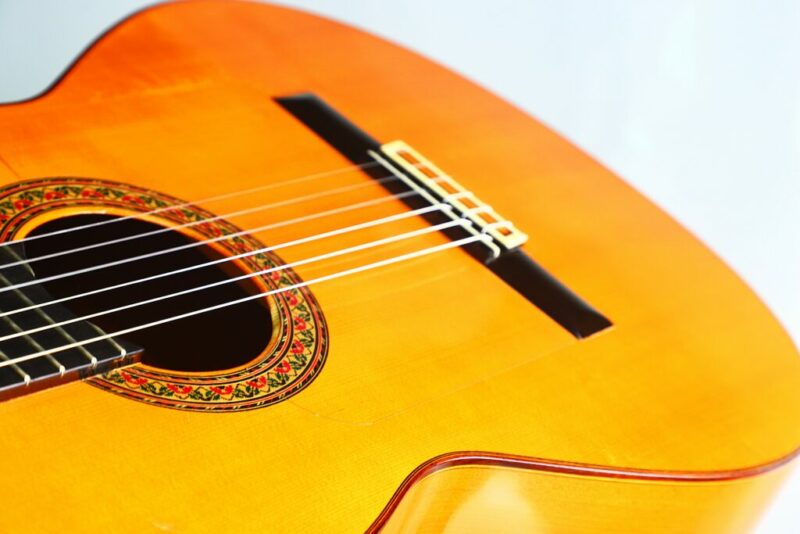 The construction of a Flamenco guitar plays a crucial role in its sound and playability. Important measurements such as scale length, nut width, frets, and string spacing influence how the instrument feels in hand and how easy it is to play. A shorter scale length can make playing techniques easier, while a narrow nut width promotes precise finger movements.
The construction of a Flamenco guitar plays a crucial role in its sound and playability. Important measurements such as scale length, nut width, frets, and string spacing influence how the instrument feels in hand and how easy it is to play. A shorter scale length can make playing techniques easier, while a narrow nut width promotes precise finger movements.
The materials of the sides, back, fingerboard, and body significantly contribute to the overall sound. Cypress wood provides a bright, penetrating tone, while rosewood adds brilliance and depth.
Additionally, the luthier has a significant impact on sound quality. Through individual craftsmanship and specific building techniques, each luthier can shape the sound and resonance of the instrument according to their vision, making every Flamenco guitar a unique experience.
Spanish Tradition & Craftsmanship in Focus
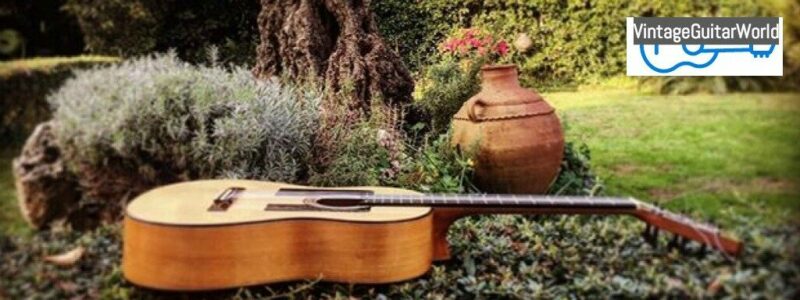 The Flamenco guitar has deep roots in Spanish culture and is inseparably linked to Flamenco dancing. This close connection is reflected in the passionate rhythms and melodies produced by the guitar.
The Flamenco guitar has deep roots in Spanish culture and is inseparably linked to Flamenco dancing. This close connection is reflected in the passionate rhythms and melodies produced by the guitar.
Typical playing techniques such as rasgueado, golpe, and tremolo give the music its characteristic expression and dynamics. Rasgueado produces powerful, percussive sounds through rapid strumming, while golpe adds exciting rhythmic accents by striking the body of the guitar. Tremolo creates a flowing and melancholic sound.
A precise tuner is of great importance for Flamenco guitarists, as the guitar's sound is directly connected to the quality of playing and its connection to dance. A well-tuned instrument allows musicians to fully express the emotional depth and nuances of Flamenco, keeping the tradition and craftsmanship of this unique guitar alive.
Frequently Asked Questions about Flamenco Guitars
| Question | Answer |
|---|---|
| Is Flamenco the most difficult guitar style? | Flamenco is considered one of the most challenging guitar styles due to its complex techniques and strong rhythm. |
| What is the difference between classical and Flamenco guitars? | The classical guitar has a fuller and warmer sound with a higher action, while the Flamenco guitar is lighter with a lower action – it is more percussive and louder. |
| What type of guitar is used for Flamenco? | Special Flamenco acoustic guitars are used, usually made of cypress combined with spruce, designed for the percussive playing style. |
| Are there opportunities to learn Flamenco guitar outside of Spain? | Yes, many music schools, guitar teachers, and online platforms offer Flamenco guitar lessons, even outside of Spain. |
| Can you play classical pieces on a Flamenco guitar? | Yes, it is possible to play classical pieces on a Flamenco guitar |

